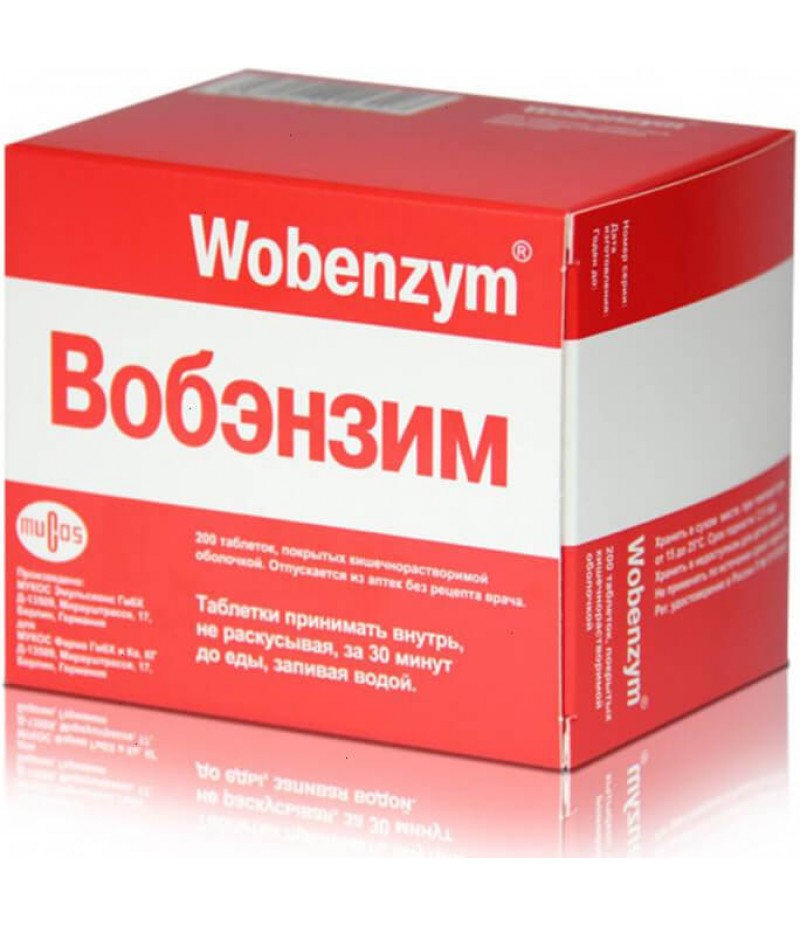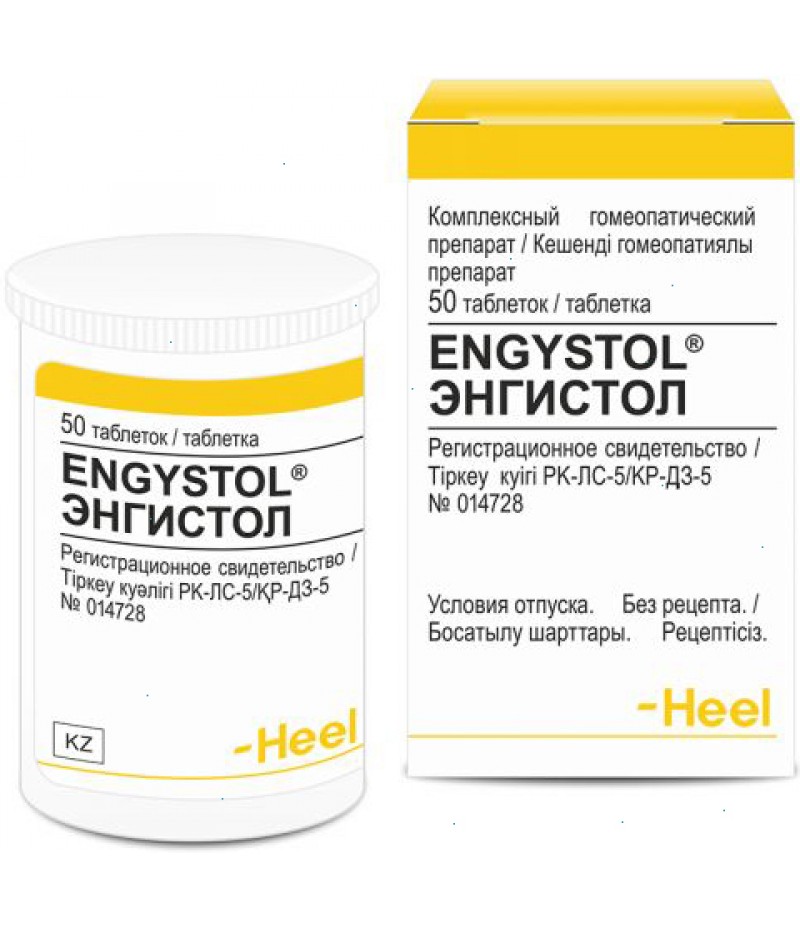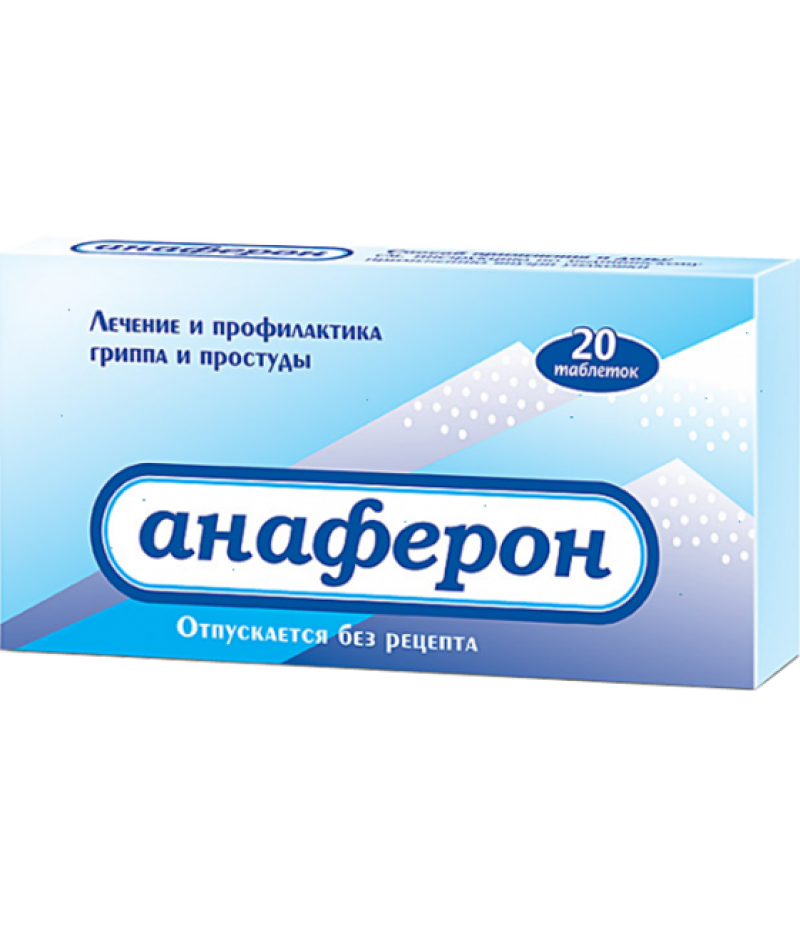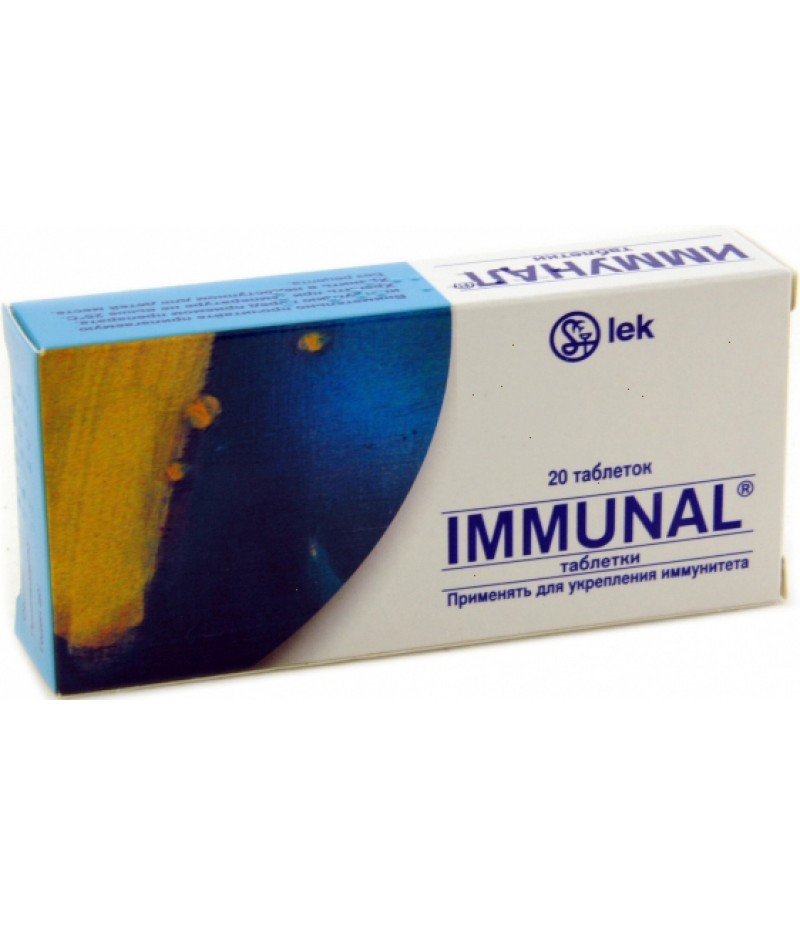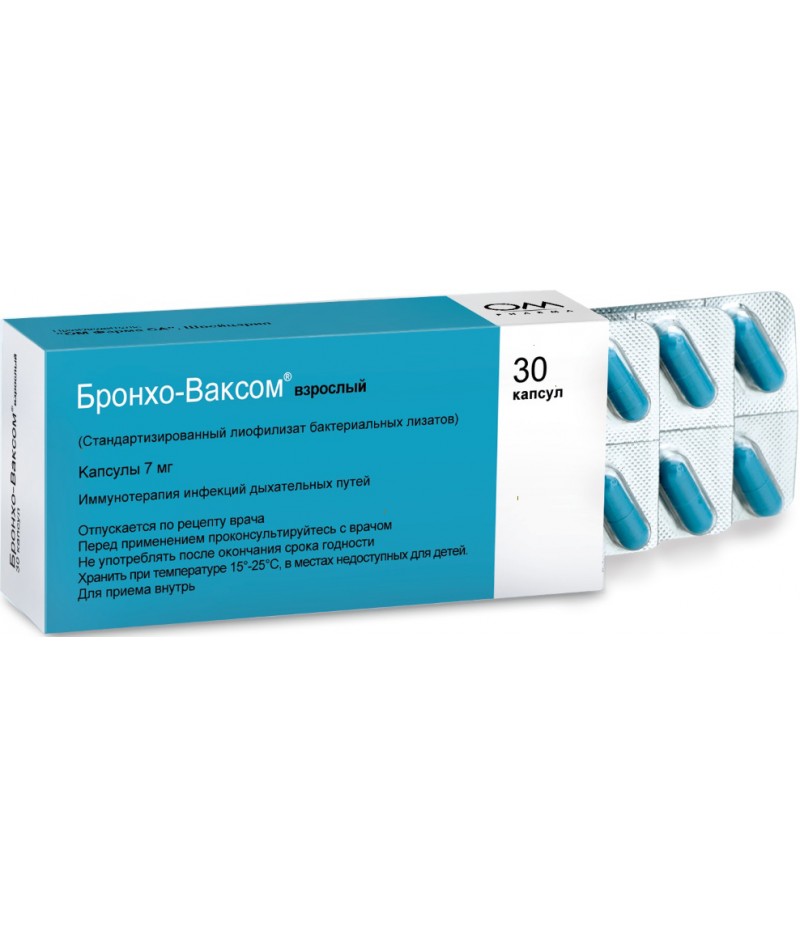Wobenzym tabs #200
- $70.50
- 2 or more $69.50
- 3 or more $68.90
- Availability:In Stock
Wobenzym instructionTo buy Wobenzym just add it to your shopping cartCompositionThe preparation (1 tablet) are the following active ingredients: 50 mg rutoside, 345 IU pancreatin 225 IU bromelain, 90
Tags: tabs
Wobenzym instruction
To buy Wobenzym just add it to your shopping cart
Composition
The preparation (1 tablet) are the following active ingredients: 50 mg rutoside, 345 IU pancreatin 225 IU bromelain, 90 units papain, 360 U of trypsin, 50 U amylase 34 U lipase 300 U chymotrypsin (wherein pancreatin is presented in units of ( ED) of the European Pharmacopoeia, and the remaining ingredients in units (ED) of the International Pharmaceutical Federation).
Additional ingredients: stearic acid, lactose, talc, corn starch, purified water, magnesium stearate, colloidal silicon dioxide.
shell composition: povidone, shellac, sucrose, copolymer of methyl methacrylate and methacrylic acid, vanillin, talc, white clay, titanium dioxide, macrogol 6000, carnauba wax, triethyl citrate, bleached wax, colorants (Ponceau 4R and yellow orange S).
Form of issue
Wobenzym produced in the form of coated tablets of 40 or 200 pieces in packs and 800 pieces in high density polyethylene bottles.
pharmachologic effect
Immunomodulating, fibrinolytic, antiaggregant, anti-inflammatory, decongestant.
Pharmacodynamics and pharmacokinetics
According to the Medical Wikipedia (MedViki), the medicine Wobenzym is a complex of highly active animals and plant enzymes (enzymes). These enzymes are carefully selected, optimally combined and included in Wobenzym Tablets, from which they have a fairly wide range of clinical applications.
Admission Wobenzym positively affects the course of the inflammatory process, reduces the pathological symptoms of immunocomplex and autoimmune reactions, positively affects the immunological reactivity of the human body. Under the influence of active ingredients of drugs, the number of immune complexes circulating in the blood decreases and their membrane deposits are removed from the tissues. The drug activates and corrects the functionality of natural killers (lymphocytes) and monocyte-macrophages, stimulates phagocytic cellular activity, cytotoxic T-lymphocytes and antitumor immunity, from which the drug Wobenzym is often prescribed as an immunomodulator.
Treatment with Wobenzym reduces the infiltration of interstitial tissue with plasma cells, increases the elimination of fibrin and protein detritus deposits from the inflamed area, boosts the lysis of metabolic toxins and dying tissue structures, reduces swelling, accelerates resorption by hematomas, and also normalizes the permeability of the vascular walls.
The use of the drug leads to a decrease in thromboxane, a decrease in platelet aggregation, stabilization of adhesion of blood cells, an increase in the plasticity of erythrocytes and their ability to change their own form, normalize platelet count and reduce the total number of activated fractions, regulate blood viscosity and reduce the total number of microaggregants. Due to these effects rheological indicators of blood and its microcirculation improve, which causes normal supply of tissues and organs of the human body with nutrients and oxygen.
Wobenzym lowers the replication of endogenous cholesterol, normalizes lipid metabolism, increases HDL concentrations, reduces the content of atherogenic lipoproteins, and improves the absorption of polyunsaturated fatty acids.
The purpose of Wobenzym enhances the effectiveness of antibiotic therapy by increasing the level of antibacterial agents in the inflammatory focus and their plasma concentrations, triggering the process of nonspecific defense of the body (production of interferons), thus demonstrating antimicrobial and antiviral effects, and also leveling the symptoms of dysbiosis. Also, the drug reduces the severity of side effects that occur when taking hormonal drugs (including hypercoagulable).
When administered orally, due to the resorption of dimeric molecules, the active ingredients of Wobenzym from the small intestine are absorbed to form protein complexes and further admission to the vascular bed. Circulating through the systemic bloodstream, the enzymes enter the zones of pathological processes, where their cumulation takes place.
Indications for use Wobenzym
The abstract to Wobenzym positions it as a means to be used in conjunction with other drugs used to treat certain pathologies as a supplement to the main treatment. Indications for use of the drug cover many areas of medicine and recommend its use in the following cases.
In angiology:
lymphatic;
thrombophlebitis;
endarteritis;
postthrombophlebitic disease;
arterial obliterating atherosclerosis of the legs;
recurrent phlebitis (prophylaxis).
In gynecology:
miscarriage (relative to the II and III trimester);
endometritis;
salpingo-oophoritis;
cervicitis;
vulvovaginitis;
mastopathy;
gestosis;
decrease in the severity and frequency of adverse events during hormone replacement therapy;
chlamydia;
mycoplasmosis;
ureaplasmosis.
In gastroenterology:
dysbiosis (dysbiosis);
inflammatory pathologies of the gastrointestinal tract of chronic course;
hepatitis.
In dermatology:
acne disease (acne);
atopic dermatitis;
itching dermatoses.
In Neurology:
disorders of blood circulation of the brain of a chronic nature;
multiple sclerosis.
In cardiology:
myocardial infarction in subacute stage;
angina pectoris tension.
In nephrology:
glomerulonephritis;
pyelonephritis.
In otorhinolaryngology:
otitis media;
sinusitis;
laryngitis;
sinusitis.
In ophthalmology:
iridocyclitis;
uveitis;
hemophthalmus;
glaucoma;
diabetic retinopathy;
ophthalmic surgery and prevention of postoperative complications.
In oncology:
radiation and chemotherapy (to improve tolerance);
reducing the risk of secondary infections.
In pulmonology:
tracheobronchitis;
pneumonia;
bronchitis;
tuberculosis;
obstructive bronchitis.
In dentistry:
diseases of the oral cavity of infectious and inflammatory nature.
In rheumatology:
osteoarthritis;
arthritis of various etiologies.
In urology:
cystitis;
Sexual infections;
prostatitis;
cystopyelitis.
In traumatology:
inflammatory processes of soft tissues;
various injuries;
posttraumatic manifestations of a chronic nature;
sports injuries.
In pediatrics:
Pathology of respiratory tract infections of infectious and inflammatory origin;
atopic dermatitis;
postoperative complications (adhesion, insufficient wound healing, local edema and suppuration).
In surgery:
lymphatic and posttraumatic edema;
postoperative complications (edema, thrombosis, inflammation).
In endocrinology:
Retinopathy and angiopathy (diabetic);
autoimmune thyroiditis.
In addition, indications for Wobenzym include prevention of the following conditions:
acclimatization and adaptation;
disorders of microcirculation;
post-stress disorders;
cardiovascular catastrophes;
negative phenomena during hormonal therapy;
viral infections or their subsequent complications;
Disbiotic disorders in antibiotic therapy.
Contraindications
Before taking Wobenzym, you should read the contraindications to its use, for which below are the conditions under which Wobenzym's treatment is absolutely forbidden:
any pathology occurring with an increased risk of bleeding;
age up to 5 years;
personal hypersensitivity to the active and / or additional components of drugs;
conducting hemodialysis.
Side effects
The therapy with Wobenzym in most cases is transferred without negative phenomena during treatment and negative consequences after its termination. Also, until now, there has been no evidence of a side effect of the drug, an addiction to it, or the formation of a withdrawal syndrome, even in the case of prolonged therapy with high dosages.
In isolated cases, the appearance of urticaria, as well as minor deviations in the smell and consistency of stool, which are offset by a decrease in the dose of drugs or are treated after withdrawal of treatment.
Before the appointment of Wobenzym, the patient should be warned that if any adverse reactions associated with taking the drug are detected, it is his responsibility to immediately stop the therapy and consult a doctor.
Tablets Wobenzym, instructions for use
Instructions for use Wobenzym recommends taking whole tablets of the drug orally (inside) half an hour before meals, drinking 150-200 ml of water.
Typically, the dosage regimen, like the duration of treatment, is determined on an individual basis, taking into account the disease itself, its severity, as well as all internal and external factors affecting the patient's condition.
For adult patients, the range of single-dose doses of the drug, depending on the pathology, its severity and activity, is 3-10 tablets with a mandatory three-time intake per day. Usually, during the first three days of therapy, 3 tablets are taken three times every 24 hours. The further quantity of tablets taken at one reception can vary, then, as the frequency of their intake per day in all cases remains unchanged (3 times in 24 hours).
With moderate disease states, 5-7 tablets are prescribed three times a day for 14 days. In the future, go to the reception of 3-5 tablets with the same frequency of reception. The general course of treatment is approximately 30 days.
In severe conditions, 7-10 tablets are prescribed three times a day for 14-21 days. Subsequently, the dosage is reduced to 5 tablets with the same multiplicity of administration. The general course of therapy is 2-3 months.
With chronic pathologies, Wobenzym tablets are recommended for taking on indications and observed symptoms, courses from 3 to 6 months.
To potentiate the effectiveness of antibiotic therapy and prevent the formation of dysbiosis, three times daily intake of 5 tablets is recommended throughout the course of antibiotic use. With the aim of treating the dysbacteriosis that has arisen after antibiotic therapy, 3 tablets are prescribed 3 times per 24 hours for 14 days.
When carrying out chemotherapy and radiation therapy, it is advised to take Wobenzym three times a day for 5 tablets throughout the treatment, in order to improve its tolerability, prevent complications of infectious etiology and improve the overall quality of life.
For the prevention of various pathological processes take the drug for 45 days for 3 tablets three times a day. This preventive course can be repeated 2-3 times a year.
Children (5-12 years) Dosage Wobenzym is calculated based on the proportion of 1 tablet per 6 kg of weight.
Overdose
Until now, the description of cases of an overdose Wobenzym not provided.
Interaction
With the combined administration of Wobenzym tablets with other drugs belonging to different drug groups, no negative interaction was found.
Terms of sale
You can buy Wobenzym online as a non-prescription drug.
Storage conditions
The temperature range of the storage of tablets is 15-25 ° C.
Shelf life - 2,5 years.
special instructions
With the development of infectious processes, Wobenzym can not replace antibiotic therapy, but significantly enhances its effectiveness by increasing plasma concentrations of antibiotics and their content in the inflammatory focus.
It is necessary to take into account the ability of the drug to enhance the symptoms of the underlying disease at the very beginning of its use. Such manifestations are offset by a decrease in the dose of Wobenzym and do not require the withdrawal of treatment.
Children
Wobenzym can be prescribed to children who have reached the age of 5 years. At the age of 5-12 years, the calculation of the dosage of the drug is carried out per kilogram of weight (1 tablet per 6 kilograms).
With alcohol
Immediately it should be noted that with any pathology, the taking of any kind of medicines and even against a background of complete health, alcohol, especially in large quantities, can not benefit the human body. Considering the compatibility of Wobenzym's treatment with the intake of alcoholic beverages, one should also take into account the fact that this medication itself is rarely prescribed, but is mainly included in the complex treatment of certain diseases, which indicates the diversity of possible effects of complex therapy on the organism as a whole and its individual organs and systems. For example, when combined with antibiotics, antiviral drugs, chemotherapy, alcohol is categorically prohibited, and with other combinations of drugs, its administration is undesirable and, at best, can lead to a decrease in the effectiveness of therapy, and at worst cause various severe complications. Another area of application of the drug is the treatment of withdrawal syndrome and in this case Wobenzym and alcohol are compatible in the same way as the concepts themselves benefit and harm.
Wobenzym during pregnancy and lactation
In the list of contraindications for the use of Wobenzym, both pregnancy and breastfeeding are absent. Moreover, in pregnancy, women are even recommended to take it to prevent miscarriage, starting from the second trimester, where the action of the drug receives positive feedback. In pregnancy, the calculation of dosage and the duration of taking the tablets is determined individually, taking into account the general condition of the future mother, the health indicators of the fetus and the course of the pregnancy itself.
Reviews of Wobenzym
Reviews of Wobenzym on the forums, however, like the doctors' reviews about Wobenzym, are rather contradictory and often lead to serious disputes among specialists and patients about the effectiveness, usefulness and safety of the drug. The opinions of many doctors and people who ever take this drug differ radically, and when some claim that complex treatment with Wobenzym's inclusion has been much more effective and safer than without it, others immediately find many arguments against and claim the perfect uselessness of this drug.
For example, some dietitians advise taking Wobenzym for weight loss in combination with diet and exercise and explain this by the ability of the drug to normalize the function of the digestive system and their microflora. Some of the patients who undergo such a course of diet therapy remain content with its results and leave positive feedback about Wobenzym. The other part, which does not notice any significant changes in body weight, naturally ascribes a negative result to Wobenzym.
Reviews about the drug in gynecology when planning pregnancy; with mastopathy, endometritis, vulvovaginitis, gestosis, cervicitis; diseases of sexual etiology (chlamydia, mycoplasmosis, ureaplasmosis), and also reviews about Wobenzym during pregnancy are mostly positive, but here also are those who see in this only a combination of circumstances and the effect of other medications taken in parallel.
In the current situation, it is not possible to draw any definite conclusions and therefore one can only advise you to rely on the opinion of your attending physician, especially if you trust him not only as a good specialist, but also as simply a decent person.

